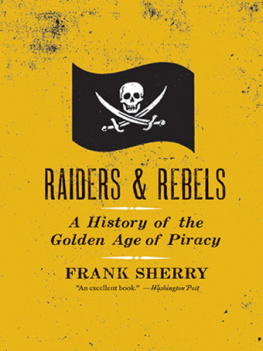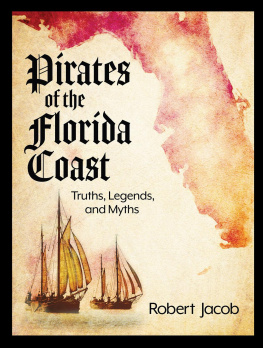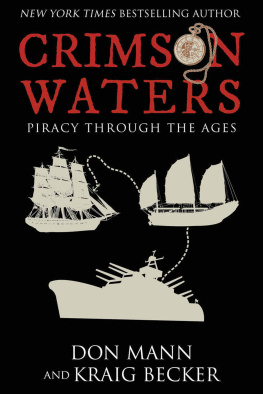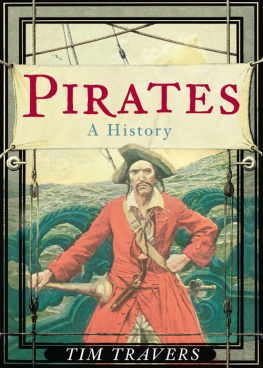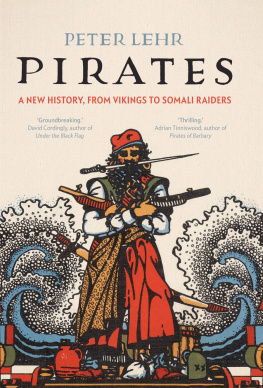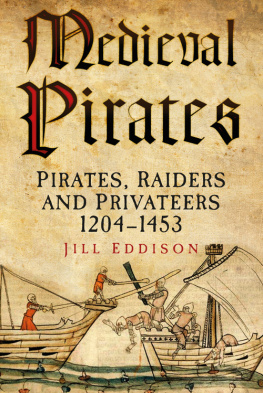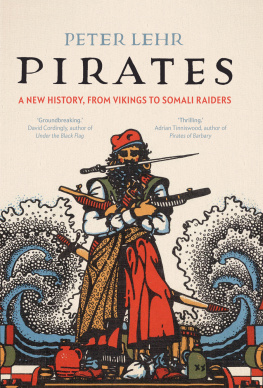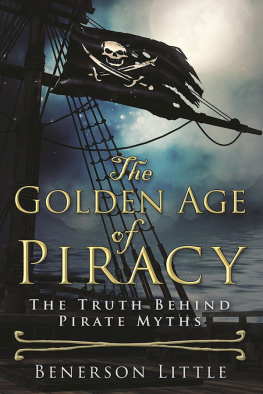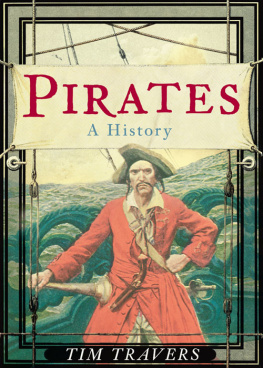The era covered in this narrativeroughly from 1690 through the 1720shas sometimes been called The Golden Age of Piracy. This is because, during those decades, the world experienced the most intense outbreak of seaborne banditry ever recorded.
This book is an attempt to give an account of the main events of that enormous eruption of piracyand to portray the often-out-sized personalities who played the chief roles in it.
Although our present-day knowledge of the pirates of that era derives from relatively few original sources, there has been no dearth of scholarly books in the past on pirates and piracy. I have naturally relied upon many of them in assembling the facts of my own narrativeand they are acknowledged fully in the bibliography accompanying this book.
I have, however, made it my particular task in this account to try to lay bare the chain of cause and effect that created the piracyand shaped the piratesof that explosive epoch. I have also sought to relate the incidents of the great pirate outbreak to the vast historical movements that were taking place during the decades covered in these pages. In brief, I have tried to present the pirate outbreakaccurately, I believeas a series of linked events, a coherent story , rather than as a jumble of outlandish characters who all just happened to be engaged in outrageous acts of piracy in the same period.
I have also endeavored to suggest in this account that there were often reasons other than mere lust for wealth that caused men and women to choose the pirate life.
Finally, I should point out that the reader need not possess any special knowledge of, or interest in, the sea or its lore in order to gain a full appreciation of the story told in this volume. For although this story is incidentally about ships and the sea, it is primarily about human beings in conflict with themselves, with each other, and with their times. It is also a tale made all the more fascinating because it really happened.
Approximately four hundred miles due east of Madagascar, the French-ruled island of Runion lies like an emerald chip in the vastness of the Indian Ocean.
Here, on Sunday, April 26, 1721, a Portuguese merchant ship, Nossa Senhora Do CaboOur Lady of the Cape rode at anchor under a blazing tropical sun.
The Cabo , a sturdy vessel of 700 tons160 feet long and 34 feet at the beamhad taken shelter in the islands peaceful harbor after losing her mainmast in a storm.
The Cabo , armed with twenty-one cannon, and carrying a crew of 130 tough sailors and gunners, was normally a formidable craft and a swift sailer. Minus the spire of her mast, however, she seemed a clumsy cripple on the glittering, almost transparent, water of the harbor.
Before the storm had interrupted her journey, the Cabo had been bound from the Portuguese colony of Goa, on the southwest coast of India, to Lisbon, a voyage of more than a hundred days that would take her more than 12,500 miles, across the Indian Ocean, around the Cape of Good Hope, and then northward home.
While riding the ocean currents east of Madagascar, however, the Cabo had run into a fierce gale that had fractured her mast. She had limped into the nearest safe anchorage for repairs.
Now, even though it was the Sabbath, the ships carpenters and crew labored urgently in the steamy heat to rig a new mast. Their haste stemmed from the fact that the Cabo was carrying a most eminent and powerful passenger who was extremely anxious for the Cabo to get under way again as soon as possible.
This passenger was His Excellency Dom Luis Carlos Ignacio Xavier de Meneses, Count of Ericeira and Marquis of Lourical, who was returning to Portugal after many years of service as viceroy of Goa.
The retiring viceroy had good reason for his anxiety, for the Cabo was not only carrying her own rich cargo of Oriental silks, textiles, spices, and porcelains, she was also carrying Dom Luiss personal fortune: chests brimming with diamonds, exotic Indian art, and precious illuminated manuscripts. Dom Luis calculated that the diamonds alone would command a worth of more than 500,000an enormous sum in the purchasing power of the day. The art treasures and manuscripts were beyond price.
In addition to his own diamonds, Dom Luis carried a consignment of gems destined for the coffers of the Portuguese king, as well as a smaller number intended for a consortium of merchants in Lisbon.
For Dom Luis, who had obtained this wealth through a series of shrewd purchases made during his tenure as viceroy, the chests of diamonds were the keys that would unlock a future of glory and ease. The king, he anticipated, would delight in his treasures from India, and would subsequently bestow his warmest favor on Dom Luis and his family. With the royal patronage secured, Dom Luis planned to make his name great in Portugal. He would sell most of his own diamonds and with the proceeds rebuild his familys estates, which had fallen into disrepair. He would live the rest of his days surrounded by magnificence. The realization of this vision of the glorious future, however, depended upon the Cabo s reaching home safely. Until he saw Lisbon again with his treasure intact, the former viceroy of Goa could not rest easy.
It was for this reason that Dom Luis himselfa proud slim figure in a scarlet waistcoat belted with a jeweled swordwatched fretfully from the quarterdeck as the repairs to the Cabo proceeded on that humid April Sunday.
It was for this reason, too, that Dom Luis felt an upsurge of anxiety when one of the Cabo s crewmen suddenly called out that two strange sails had appeared on the horizon.
Nervously Dom Luis popped open his glass and examined the two strangers. Clearly they were making for the island. As the newcomers approached, Dom Luis could see that one of them was an East Indiamana merchant vessel like the Cabo while the other was a mere brig.
Dom Luis sighed with relief when he made out the British flags flying from both the approaching vessels, and the plain, honest faces of their crewmen visible on deck. Satisfied that these were ships of the British East India Company, probably on their way to trade with the Great Mogul, the Portuguese viceroy prepared to fire a salute to the oncoming Englishmen, as courtesy required. Perhaps he would even invite their officers aboard the Cabo when they had anchored and refreshed themselves.
As Dom Luis continued to observe the British ships, however, uneasiness began to creep into the pit of his stomach. He saw now that the two strangers were not anchoring after all. Instead they were bearing down menacingly on the helpless Cabo .
Dom Luis watched with alarm as the larger ship slid smoothly into position alongside the Cabo s port beam, while the brig ranged in close to starboard. Then alarm swelled to terror as the British ensigns that the strangers had been flying suddenly fluttered downand black flags rose in their place, grim white skulls snapping in the wind.
Now pandemonium broke out aboard the Cabo as her officers and crewmen, all at once aware of their mortal danger, sprinted to defend their disabled ship.
But it was too late. A flash of orange fire, accompanied by a thunderous roar, erupted over the Cabo as the pirate vessels fired.
The Cabo shuddered under the impact. Wooden splinters flew through the air like lethal shards. Wounded men screamed. Dense black smoke billowed over the decks. Then, shouting oaths in barbaric English and French, two hundred wild-eyed cutthroats, like demons from Hell itself, swarmed onto the Cabo s deck from both pirate ships.

